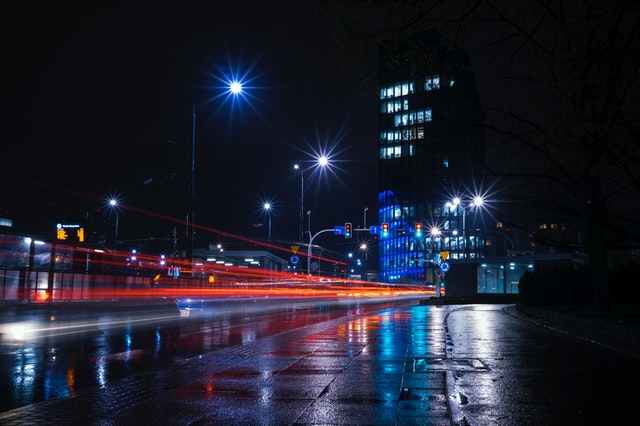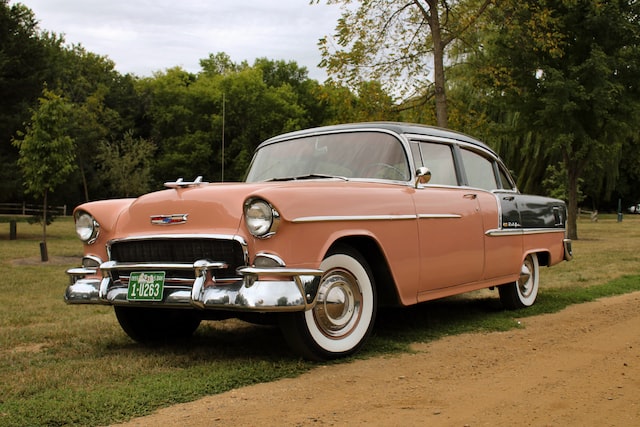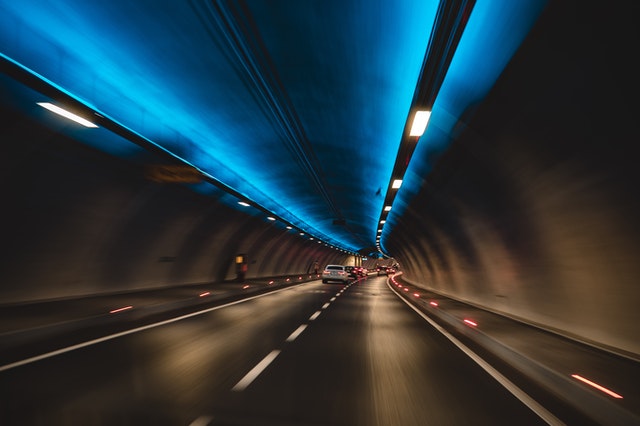Driving at night is always considered a big challenge and many statistics show that the risk of serious accidents at night has increased 3 times. When driving at night, it can be difficult to tell if the obstacle in front of your headlights is an animal or a pedestrian. That is the reason why many people are concerned about the level of traffic. Please refer to the safe experience of driving at night for new drivers through the following article!
What To Do Before Starting Night Driving?

-
Exactly understand the route
Before starting a trip, especially with a new road at night, drivers should know the route to avoid going the wrong way. Because when it is dark, it will be difficult to see all the signs. Most current car models are equipped with navigation and navigation systems, so the driver should use this function to choose the appropriate direction of travel.
-
Keep headlights, mirrors, and windshields in top condition
Using your headlights is your most important lifeline when driving at night. If they don’t work properly, it’s obvious that your risk of having an accident increases. Keep your headlights clean by cleaning them every few weeks, this will help keep the brightness of the lights at its maximum. Check the lights regularly, if they burn out, replace them as soon as you can.
Besides, for the best visibility, you need to keep your windshield, windows, and mirrors as clean as possible. Avoid using your hands to wipe these important parts, as the natural oils on your skin can leave smudges and obscure vision. Instead, let’s use soft or types of microfiber towels.
-
Ensure the best health condition
Safe driving always requires drivers to be very focused and in the best body state, without being drowsy or tired. One of the leading causes of traffic accidents while driving at night is the lack of alertness of the driver. This is understandable because the night is the rest time for most people. A good night’s sleep before departure will give the driver ample energy during the long journey. Therefore, in the case of night driving, the driver should take advantage of a nap time of at least 15-20 minutes before starting. In addition, when you find yourself about to fall asleep, the driver should chew some gum to maintain alertness, thereby helping the brain forget about sleep cravings and focus on driving.
Driving a car at night easily depletes the body, loses a lot of energy, easily leading to a “strike” of the brain. Therefore, before going on the road, the car owner should prepare some drinks such as tea, coffee, mineral water … and some snacks to use when needed. According to health experts, snacks under 100 calories will provide just enough nutrients to keep the body awake while driving. In addition, drivers absolutely must not drink alcohol, drugs before and while driving because it will limit the driver’s vision and ability to handle quickly.
Tips For Driving At Night

When driving at night you should follow the following tips to keep the safety of both yourself and other road users:
Set vigilance to the maximum
- Turn on the lights when it’s dark
As night falls on the highways of the city, most vehicles will turn on their headlights, but not all. As a general rule, if you feel like it’s getting dark and your visibility is getting poor, turn on your headlights immediately. While you may not need your headlights to see the road during this stage, it may be easier for other drivers to see when you are approaching with your headlights on, especially when the sun is setting in the opposite direction of your vehicle.
Besides, it’s important to note that in many jurisdictions, it may be against the law to drive without headlights at night or in the morning. In California, for example, floodlights must be on from half an hour before sunset to an hour and a half after sunrise, along with any other low visibility conditions for safety.
- Reduce driving speed
As a general rule, driving at night often has much lower visibility than during the day, even on highways with good light intensity, so it takes longer to see and react to hazards. potential hazards such as obstacles or people crossing the road. Therefore, it is essential to keep a moderate speed so that you have time to handle sudden dangerous situations.
The risks on the road are uncontrollable, but you can take control of your driving, allowing more time to react to any problems encountered, and a smart way to move. drive slower, to ensure that you can stop when you see an obstacle within the distance illuminated by the headlights directly in front of you.
- Beware of drunk and tired drivers
At night, drivers who are drunk and show signs of fatigue are more likely to appear than during the day. According to statistics in 2013, driving while intoxicated caused 4 times more accidents at night than during the day. In a state of intoxication or fatigue leading to drowsiness, sleepiness will cause loss of control and reaction speed significantly, leading to speeding or encroaching on the road, if you feel there are any problems. Irregular drivers should move slowly to the side of the road and leave a wide enough safe space if they intend to pass.
A small note is that weekends are usually the time to gather and have fun, so the rate of drunk drivers will increase compared to weekdays. Especially during the holidays, so if you’re traveling at night during these days, stay alert and stay vigilant in all situations.
- Beware of animal signs
Night driving is dangerous because you can face lots of animals crossing the road, which can put you in dangerous situations, especially when driving in suburban and rural areas. Driving at high speeds, on unlit roads, or in inclement weather can make it difficult to see animals crossing the road in front of you, so be careful when traveling through rural areas or places with animal signs to ensure safety.
- Observe the situation carefully
The distance can be a big problem for nighttime drivers. To focus, try to keep your eyes moving while you drive. Constantly look ahead for potential hazards, glance to the side of the road when necessary, and remember to check your mirrors to stay aware of your surroundings. Avoid focusing solely on road markings, which do not provide much important visual information and can also create potential hazards.
At night, the harmony of the quiet in the car and the stillness of the surrounding atmosphere can put you in danger, create a state of relaxation, and lead to distraction, so be careful, be alert and keep your eyes active and alert in all circumstances.
Read more >> Tips For Driving In Rain You Should Remember
Improve visibility while driving
- Use suitable lights
Cars are equipped with different types of lights depending on the purpose as well as different use cases. Headlights are lights placed at the front of the vehicle with great light intensity, with the purpose of making it easier for drivers to observe obstacles from afar, or traffic signs to adjust speed as well as traffic lights. Traffic signs are important even at high speeds, especially at night. However, the headlights will cause the vehicle to go from the opposite direction to be dazzling and have limited visibility, causing many dangers, so it is necessary to use headlights according to regulations.
- Use headlights and low beams reasonably
Lights on cars usually have 2 modes of headlights and taillights. The low beam is a low beam light that helps the driver to see the road surface more clearly and easily avoid foreign objects. The downside is short-range, so if you move at high speed on the road, it will make you less visible and difficult to handle situations early.
In contrast, the headlights have a strong light intensity, a projection range at a certain height, creating favorable conditions for drivers to handle on the road. However, it is not for that reason that drivers abuse high beam headlights because headlights with high beam angles and strong intensity will obstruct visibility, causing discomfort to vehicles traveling in the opposite direction or even vehicles going in the same direction.
Many cars now use high-intensity HID and LED headlights. These lamps are aesthetically pleasing and provide superior illumination compared to traditional halogen lamps. These new types of headlights can cause glare and inconvenience to oncoming drivers.
In some situations, headlights can be the cause of an accident because the driver on the opposite side cannot observe the traffic situation to react in time. Therefore, if you drive on inner-city roads in cities, densely populated areas, please switch to low-light mode. This helps prevent oncoming traffic from being dazzled and minimizes the possibility of a collision. On highways with high medians, you are allowed to use your headlights for the best visibility.
- Avoid looking directly at oncoming headlights
Even in the road traffic law, there are also regulations on the use of high beams, along with administrative fines for violations. However, in fact, some unconscious drivers still use headlights when traveling on inner-city roads.
When facing a situation where the oncoming vehicle turns on, the bright light can make you momentarily stunned. Therefore, you should not look directly at the headlights of oncoming vehicles. If you feel the glare, you should blink immediately in combination with gradually reducing the speed, observing the road ahead, or looking to the side of the road to watch the vehicle for safety. This helps you quickly regain vision to ensure safety.
- Do not leave too much light in the car
Always keep the light source in the instrument cluster as well as other locations in the cabin at a moderate level. If there’s too much light inside the car, the pupils will constrict like they would when driving in the sun, resulting in a more difficult view of the road when it’s dark. This is very noticeable when there are now many models equipped with large infotainment screens with bright lights. Besides, you also need to keep your eyes from drying out by adjusting the air conditioner to not blow directly on your face.
- Consider adding fog lights
Fog lights have a yellow light and are placed under the car, this type of light works well in foggy environments, providing good support for drivers to see more clearly in obscured visibility conditions. If you often have to move at night and that area often has dense fog or erratic weather, it is worth considering adding specialized fog lights. However, each car model is suitable for different types of lights, if you do not have professional knowledge on this issue, please consult a specialist.
- Use anti-reflective glass
If you need to wear glasses while driving to see clearly, an anti-reflective coating should be used. Since lights can cause glare, limit vision, and blur your eyes for a while, try wearing contact lenses or purchase a set of glasses with a reflective coating to ensure safety.
- Keep the windshield and front light assembly clean
While a dirty windshield can reduce visibility during the day, at night, this is a serious problem. A dirty windshield can distort visibility, making it more difficult to see road signals. Therefore, always keep the windshield clean by wiping it once if necessary before setting off. This will make traveling at night more convenient and safer. In addition, a survey found that yellowed headlights produce up to 20% less light than new headlights, thus seriously affecting visibility on dark or poorly lit roads. Reduced visibility at night means less safety.
Read more >> Ice Driving Tips: How To Drive Safely In Snow?
Keep your mind at ease
- Stay awake by chatting with your companions
Once you’ve mastered the fundamentals of safe night driving, the experience can really be a fun, relaxing one, especially if you make the most of recreational opportunities that also help you drive safely. For example, if you have a passenger or a companion in the car, you can chat with that person. Talking to other people is a great way to reduce driving fatigue, as well as to help you relax and stay awake because quiet spaces at night can cause drowsiness. However, it is also important not to engage in conversations for too long, as arguing in some cases will distract you from the most important task – driving safely.
- Listening to music
Driving at night can be a great time to listen to your favorite tracks on your car stereo. Using your favorite music that is upbeat and exciting will make it easier for you to stay awake and keep up with the tunes. Experiencing your favorite sounds on a quiet stretch of road will be a very enjoyable and memorable experience.
- Take a break if possible
Driving for long distances, especially at night, can easily lead to fatigue, drowsiness, and this can cause many of the same risks as being drunk. This condition leads to cognitive decline, reactions are also reduced and much slower than when awake. If you feel like you’re not alert, find the nearest stop and give yourself some time to rest and relax, so you can fully focus before heading back down the road.
If you are too tired and want to take a nap, find a place to stop and sleep for a while, parking on the curb and sleeping in the car is never a good idea. At night is full of risks such as thieves or freaks that can damage your car, so in suburban or deserted areas, you should be aware of the potential dangers and choose For the best solution, safety should come first, which is much more important than being late or missing your appointment.
Run at the proper speed and keep distance from other vehicles
Why should you drive slower at night? Visibility at night is not as good as when driving during the day, so it is advisable to control the car to move more slowly, in accordance with the lighting range of the headlight system, and not to exceed the allowed speed. When you drive at night you can reduce to a proper speed for the purpose of ensuring safety.
In addition, it is recommended to increase a safe distance from the vehicles ahead to react to unexpected situations. To measure the distance, many drivers often apply the 4-second rule. Accordingly, the driver will choose the farthest point of light that the low beam reaches, when the vehicle in front passes this point, you start counting 4 seconds. After 4 seconds, if the vehicle has just arrived or is approaching the selected light point, your vehicle is within a safe distance. Conversely, if the vehicle passes the bright spot before counting to 4 seconds, you should slow down to keep a suitable distance.
According to this principle, suppose the driver is driving at a speed of 60 km/h which is equivalent to 16.6 m/s. At this speed, if the 4-second rule is applied, it is necessary to keep a safe distance from the vehicle ahead of about 16.6 x 4 = 66m.
Hopefully, with the above sharing tips of driving at night for new drivers, you have gained more useful knowledge for long night trips with many potential risks and always ensure safety for your and other people.
Otherwise, you can visit our website and try our free DMV practice test questions to strengthen your knowledge about road signs and road rules to avoid any mistakes on the road. Or you download it for your IOS or Android devices to obtain the knowledge anytime you want!

UT Utah License Renewal: A 2025 Comprehensive Guide
Discover the ultimate guide to Utah license renewal! This comprehensive guide delves into the intricacies of renewing your driver's license in Utah,...
February 13, 2023

South Carolina S.C. Driver's License Renewal
The South Carolina S.C. driver's license renewal process is designed to be comprehensive, taking into consideration eligibility requirements, renewal methods,...
February 13, 2023

Pennsylvania PA DMV License Renewal: A 2025 Full Guide
The Pennsylvania PA DMV license renewal process is designed to be comprehensive, taking into consideration eligibility requirements, renewal methods,...
February 10, 2023

